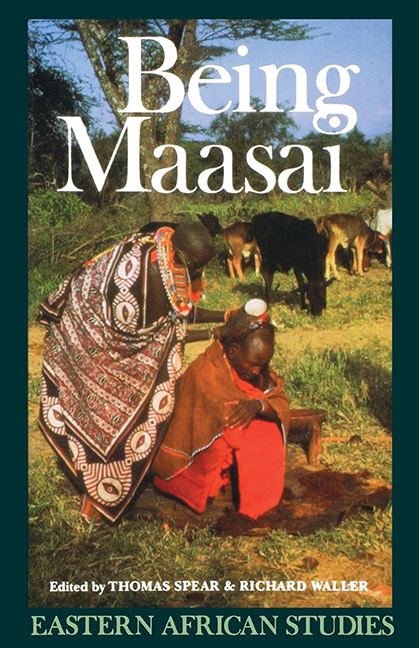Book contents
- Frontmatter
- Contents
- Maps, Figures & Illustrations
- Contributors
- Acknowledgements
- I Introduction
- II Becoming Maasai: Introduction
- 1 Dialects, Sectiolects, or Simply Lects? The Maa Language in Time Perspective
- 2 Becoming Maasailand
- 3 Maasai Expansion and the New East African Pastoralism
- 4 Aspects of ‘Becoming Turkana’: Interactions and Assimilation Between Maa- and Ateker-Speakers
- 5 Defeat and Dispersal: The Laikipiak and their Neighbours at the End of the Nineteenth Century
- 6 Being ‘Maasai’, but not ‘People of Cattle’: Arusha Agricultural Maasai in the Nineteenth Century
- III Being Maasai: Introduction
- IV Contestations and Redefinitions: Introduction
- V Conclusions
- Bibliography
- Index
1 - Dialects, Sectiolects, or Simply Lects? The Maa Language in Time Perspective
from II - Becoming Maasai: Introduction
Published online by Cambridge University Press: 30 August 2017
- Frontmatter
- Contents
- Maps, Figures & Illustrations
- Contributors
- Acknowledgements
- I Introduction
- II Becoming Maasai: Introduction
- 1 Dialects, Sectiolects, or Simply Lects? The Maa Language in Time Perspective
- 2 Becoming Maasailand
- 3 Maasai Expansion and the New East African Pastoralism
- 4 Aspects of ‘Becoming Turkana’: Interactions and Assimilation Between Maa- and Ateker-Speakers
- 5 Defeat and Dispersal: The Laikipiak and their Neighbours at the End of the Nineteenth Century
- 6 Being ‘Maasai’, but not ‘People of Cattle’: Arusha Agricultural Maasai in the Nineteenth Century
- III Being Maasai: Introduction
- IV Contestations and Redefinitions: Introduction
- V Conclusions
- Bibliography
- Index
Summary
The Maa language is spoken by Maasai in southern Kenya and northcentral Tanzania as well as by Samburu (Sampur, ‘Burkeneji’) and Chamus (Camus, Njemps) in central Kenya. It belongs to the eastern branch of the Nilotic languages, other members of which are Bari and Lotuko in the southern Sudan, Karimqjong and Teso in eastern Uganda, and Turkana in northwest Kenya. As the cradleland of early Eastern Nilotes was probably situated east of present-day Juba in the southern Sudan (Vossen, 1982: 468), the modern distribution of Maa-speakers must be seen as the result of a general north-south movement of their ancestors which commenced early in the first millennium AD. The first Maa-speaking immigrants reached the Rift Valley area by the end of the ninth century and probably the Tanzanian territories to the south by the mid-sixteenth century at the earliest.
Today the Maa language is divided into a number of more or less closely related varieties which can be grouped into two major clusters: North Maa includes the Samburu and Chamus dialects, while South Maa consists of an as yet uncertain number of variants which make up Maasai. The generally consistent picture of north-south movement of, and internal differentiation among, the Maa-speaking population is, however, upset by certain similarities between the most widely distanced dialects of Samburu and Chamus in the far north on the one hand, and Parakuyo (Baraguyu) in the far south on the other. These indicate, first, prior historical interaction between them subsequent to the split between North and South Maa, but prior to the Parakuyo move south, and second some of the complexities of subsequent interactions between and among small groups of Maa-speakers.
The structure of our presentation follows from these key features of Maa linguistic history. Thus we will first give a general overview of external as well as internal relations and then embark on a discussion of some of their ‘ethno-historicaT implications.
Maa External Relations
East Africa, with its diversity of geographical zones, attracted large numbers of people of varying ethno-linguistic affiliation over thousands of years. Besides Nilotes and Cushites, Bantu and Khoisanspeakers immigrated from different directions or formed part of a largely unknown autochthonous population, respectively. Interethnic contacts, often highly intensive and long enduring, thus played a prominent role in the development of external relations of East African peoples including the Maa-speaking population.
- Type
- Chapter
- Information
- Being MaasaiEthnicity and Identity in East Africa, pp. 25 - 37Publisher: Boydell & BrewerPrint publication year: 1993



